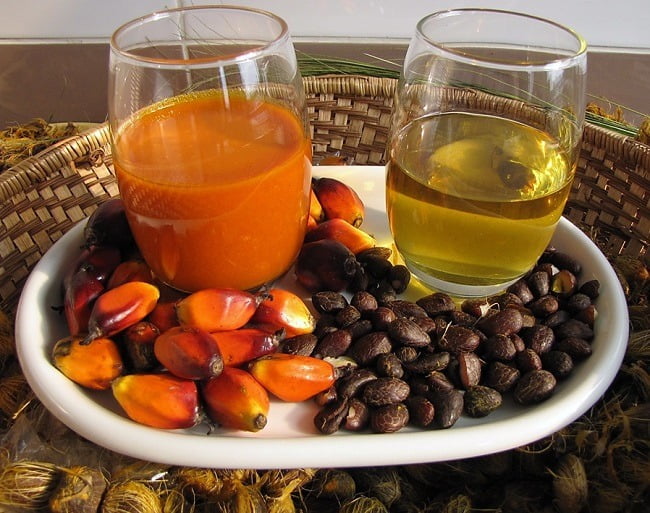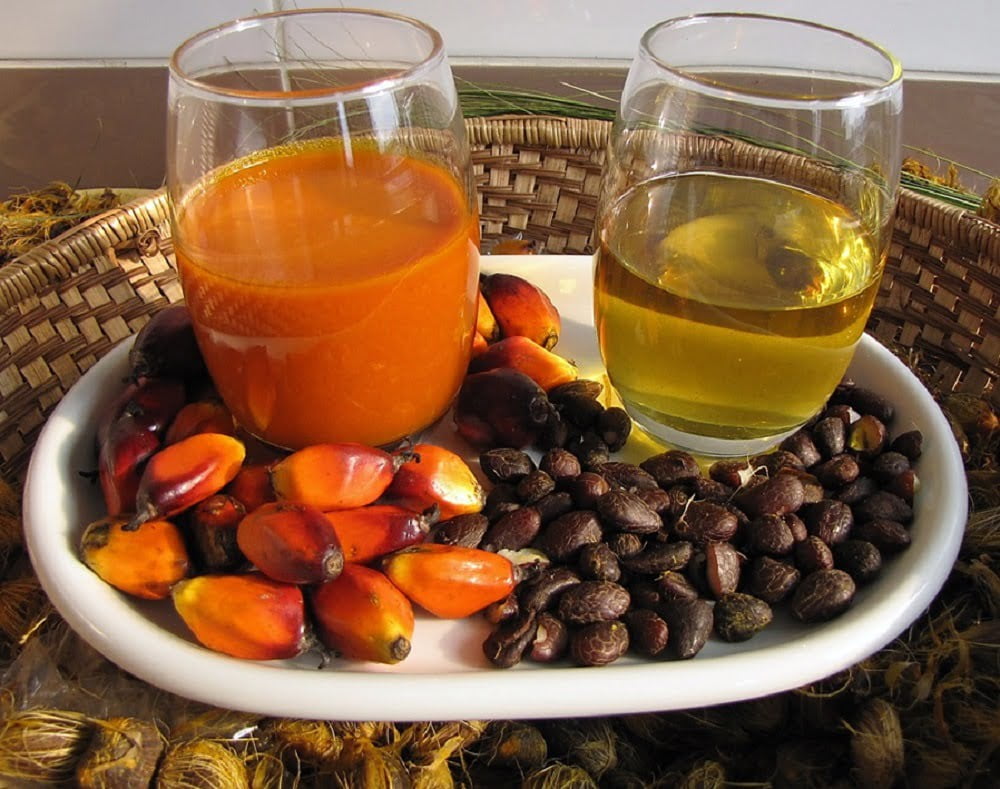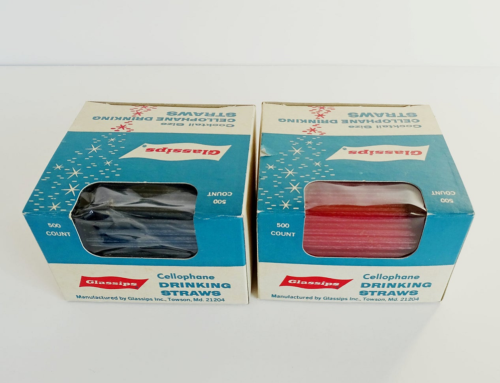Recently, haunted by images of deforestation and homeless orangutans, I decided to cut palm oil out of my diet. After spending a long time during my weekly shop carefully checking lists of ingredients, I can report that going palm oil free is incredibly difficult. Not only is the stuff present in a shockingly high number of products, in many cases unclear labelling makes it hard to work out whether products contain it or not.
Most environmentally minded shoppers will be aware that palm oil production is causing problems, and they may want to avoid it, but my experience suggested that consumers are not well supported in such a choice. So, when I heard that supermarket chain Iceland was set to introduce a ban on palm oil in its own brand products, I began to wonder whether the tide was finally turning against palm oil, and what other policies might be put in place to help consumers avoid it.
No oil painting
Originating in west and south-west Africa, oil palms were introduced to Indonesia and Malaysia around the turn of the twentieth century, and these latter two nations are now the world’s primary producers and exporters of palm oil.
Unlike other oil producing crops such as olive trees, rapeseed and sunflowers, all of which thrive in arable land, oil palms can only be grown in tropical regions of rainforest. This means that growing oil palms on an industrial scale requires some level of deforestation. Historically, the cultivation of palm oil has followed a policy of ‘slash-and-burn’ agriculture, where whole swathes of virgin forest have been cleared to make way for oil palm plantations.
Palm oil production therefore entails a host of destructive impacts: to forests, to landscapes and – because these things are also habitats – to wildlife, such as the orangutans of Borneo and Sumatra, who have lost over 80% of their habitat in the last 20 years. And it’s not just orangutans but also tigers, rhinoceroses, bears, elephants and other animals who suffer, either from habitat loss or direct violence from developers or hunters who benefit from the increased road access to the forest.
There are also massive climate change impacts associated with deforestation. The Union of Concerned Scientists has estimated that tropical deforestation accounts for 10% of global warming emissions. It has also been estimated that Indonesia’s palm oil industry accounted for 2-9% of all tropical land use emissions from 2000 to 2010.
When confronted with all this, I’d expect many western consumers to experience the kind of visceral, negative reaction I did. So, can there be anything so great about palm oil that explains why its proliferation has been allowed at the expense of so much destruction?
Cream of the crop?
One thing that oil palms have going for them is that they are an extremely high yield crop compared with other sources of vegetable oil. In terms of land use, the oil palm is actually the most efficient oil crop, with an average yield per hectare per year over five times that of rapeseed – its nearest competitor. This is perhaps why, combined with its useful properties, oil palms accounted for 31% of global production of edible oil / fat in 2015, more than any other oil crop.
About 50% of supermarket products contain palm oil and its uses are many. One of its most useful properties is that, unlike other oils, it is solid at room temperature, and for this reason is used in margarines, lipstick, and even sliced bread. It also used as a bulking agent, and to give products such as ice cream, biscuits and chocolate a smooth and creamy texture. However, while it may seem like a very useful ingredient, it is worth noting that palm oil only really became popular in the early 90s, while processed foods have been around since the early 20th century. So, it could be argued that palm oil is far from an essential ingredient.

Getting to the kernel of the matter: could the benefits of palm oil ever outweigh its negative environmental impacts? Photo: T.K. Naliaka (CC BY-SA 4.0), via Wikimedia Commons
While the western need for palm oil may be dubious, how about the economic needs of the countries actually producing the stuff? According to the Sustainability Policy Transparency Toolkit, in Indonesia the average income per hectare of an oil palm plantation is on average 10 times larger than that of a rice plantation, with an estimated 25 million Indonesians economically dependent on palm oil production. However, while palm oil can help to tackle to rural poverty in developing economies, it has also been linked to illegal land grabs and the displacement of indigenous communities.
Palm off
If the western consumer decides that the negative environmental impacts outweigh the economic benefits – and that they can cope with pre-1990s levels of chocolate creaminess – then what are their options?
Like me, they could try to cut out palm oil out of their shop, but as I found, palm oil labelling can be as oily as the stuff itself. The Green Palm Sustainability website gives a list of all the possible ‘palm and palm kernel oil product ingredient names’, and it runs to 36 names long. This makes it very hard for the consumer to make an informed choice, as while ‘palm fruit oil’ may be a giveaway, ‘Palmitoyl Tetrapeptide-3’ is somewhat confusing and ‘vegetable fat’ doesn’t tell you whether you are feeding the palm oil machine or choosing an alternative.
You can be surer of cutting down on palm oil if you opt for products that are not industrially produced, favouring fresh or locally made foods and cosmetics. However, this may be prohibitively expensive and inconvenient for some people, and the reality is that most consumers only have a limited amount of time and attention to spend on this kind of issue amid the rush of their daily lives.
Given how hard it is for the individual to act in this case, perhaps we need a more regulatory approach.
Forbidden fruit?
One regulatory measure would be to introduce bans on the import of palm oil. The European Parliament has already approved a resolution calling on the European Commission to ban biofuels made from vegetable oils (including palm oil) by 2020, lest use of these fuels to meet renewable transport targets should have the perverse effect of encouraging deforestation. The Commission has responded by starting to gather research on the topic. The vote has caused much concern in Malaysia, with small holder farmers seeing it as a real threat to their livelihoods, as the EU is the third biggest importer of Malaysian palm oil.
This highlights the complexity of the issue and the myriad competing interests: we must weigh up the interests of endangered species and the environment against the interests of rural farmers, and the interests of rural farmers against the interests of indigenous communities. And if we were to ban palm oil outright, where would the land come from for growing alternative oil crops? It seems unlikely that European agriculture could sustain European appetite, especially given the relatively low yield of European oil crops.
At least one conservation scientist has argued that the best route is to work with palm oil producers to make the product as environmentally and socially sustainable as possible. Now that the damage has been done, and now that plantations provide an economic lifeline, perhaps we should be concentrating on halting further destruction by improving the efficiency of existing plantations, rather than ceasing trade all together.
In this scenario, regulation would help by creating incentives for sustainable product, perhaps coupled with a requirement for better labelling to empower consumers to make informed choices. The Round Table for Sustainable Palm Oil is already working to certify plantations that meet sustainability criteria, and the Co-op for one has been move towards using only certified palm oil in its products.
I admire that companies such as Iceland, and the European Parliament, are taking a strong stance against palm oil. However, focusing on ensuring regulated sustainable production and properly enforcing a ban on further deforestation – coupled with better labelling for consumers – may be the more practical way forward, the more constructive expenditure of environmentalist effort. Any resultant increases in the price of palm oil would then force producers to decide whether or not they really need it in their products, in which case maybe we’ll go back to how products tasted 20 years ago. Until then, it’s up to individual consumers to consider the issues and make their own choices – palm oil free biscuit, anyone?







Leave A Comment